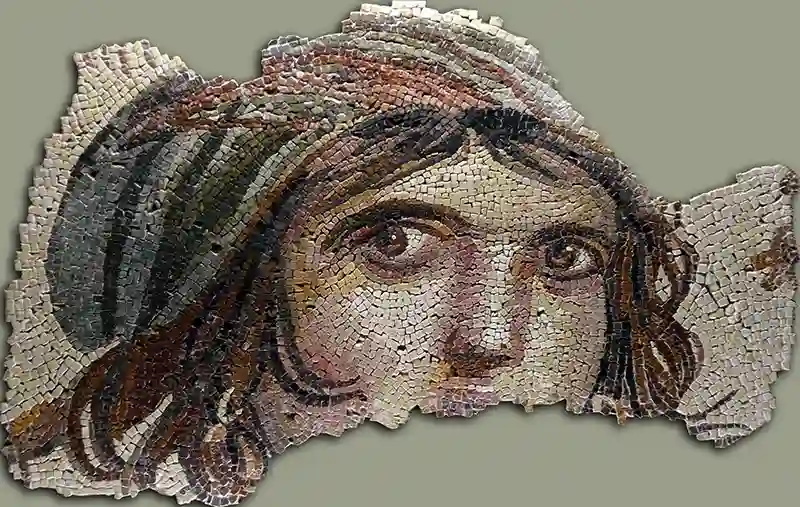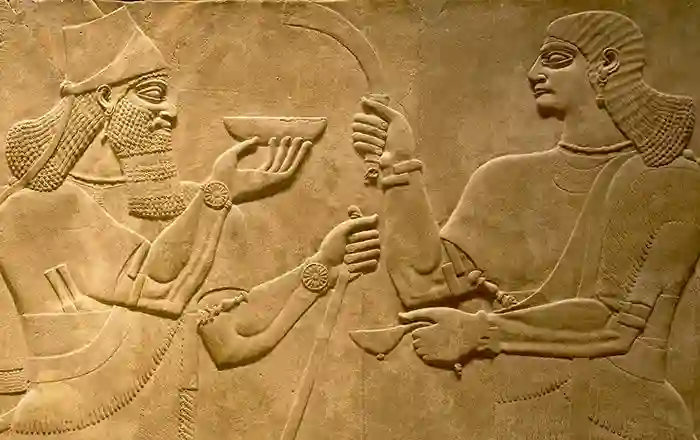Deep within the depths of Turkey’s Zeugma Mosaic Museum lies a captivating and mysterious artifact known as the Gypsy Girl mosaic. This ancient masterpiece, with its hauntingly expressive eyes and intricate craftsmanship, has intrigued historians, archaeologists, and art enthusiasts alike.
The Gypsy Girl mosaic, often shrouded in mystery, offers a complex narrative that intertwines art, culture, and speculation. This article delves into the depths of this mosaic’s story, exploring what we know, what remains unknown, and the myriad theories that surround this enigmatic piece. For a broader understanding of ancient mysteries, you might also be interested in the Secrets of Mesopotamian Art and how they reveal fascinating cultural insights.
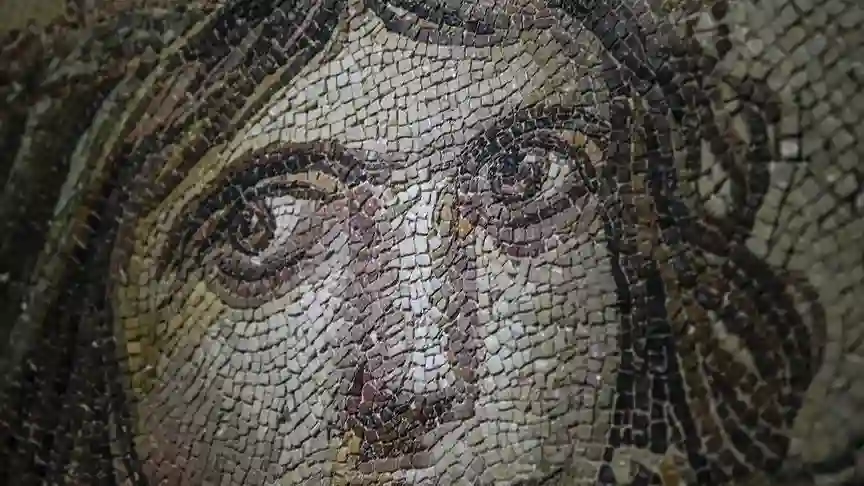
What We Know: The Established Facts of the Gypsy Girl Mosaic
The Gypsy Girl mosaic is one of the most notable artifacts housed in the Zeugma Mosaic Museum in Gaziantep, Turkey. Discovered in 1998 during an excavation led by the Turkish Ministry of Culture and Tourism, this piece of art is a fragment of a larger mosaic believed to have adorned the floor of a villa in the ancient city of Zeugma. The mosaic dates back to the 2nd century AD, during the height of Roman influence in the region, and is noted for its Hellenistic artistic style that depicts realistic human expressions.
The mosaic is named ‘Gypsy Girl’ due to the figure’s slightly tousled hair, piercing eyes, and melancholic expression, which are reminiscent of stereotypical depictions of a gypsy. This name, however, is not rooted in any historical evidence about the identity of the figure but rather in the subjective impression that the image conveys to the observer. To explore more about the origins and history of mosaics and their influence on Roman art, visit the British Museum’s collection of Roman Mosaics.
The Gypsy Girl mosaic is known for its high level of detail, especially the meticulous use of tesserae—small, cube-shaped pieces of colored stones and glass—that create a lifelike depiction of the figure’s face.
Despite its fame, the Gypsy Girl mosaic is only a small section of a much larger mosaic floor, most of which remains lost to history. The rediscovery of the mosaic in Zeugma—a city founded by one of Alexander the Great’s generals—provides a tantalizing glimpse into the cultural and artistic achievements of the period. Zeugma itself was an important ancient city that stood at the crossroads of civilizations, and its mosaics are some of the best-preserved examples of ancient Greek mosaic art in the world.
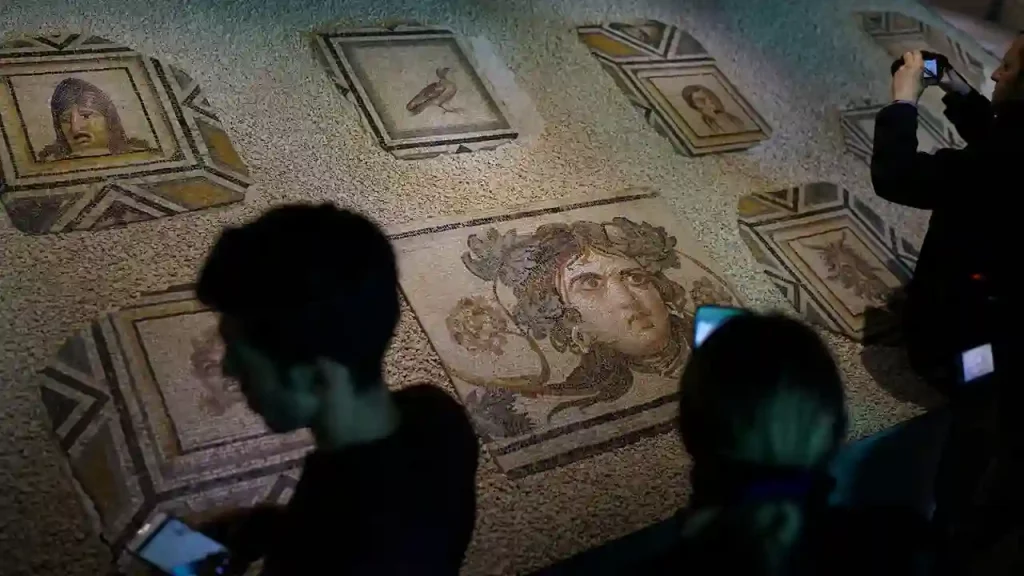
Mysteries Surrounding the Gypsy Girl Mosaic
While much is known about the Gypsy Girl mosaic and its origins, many questions remain unanswered. For one, the true identity of the figure represented in the mosaic is still a subject of debate. Is it a portrait of a specific individual, perhaps a local or a member of a Roman noble family, or is it a symbolic representation—such as a muse or deity—crafted for the aesthetic pleasure of the villa’s inhabitants?
Another mystery is the purpose of the larger mosaic composition of which the Gypsy Girl was a part. The surviving fragment provides no clear indication of the complete design, making it difficult to understand its full narrative or thematic context. Was it part of a larger scene depicting mythological stories, daily life, or allegorical themes? Some scholars speculate that the mosaic could have depicted a famous mythological tale or historical event, but without more substantial evidence, these ideas remain speculative.
The artistic techniques employed in the mosaic also raise intriguing questions. The remarkable use of shading and color gradients, particularly around the eyes, suggests a sophisticated level of craftsmanship uncommon in many mosaics of the era. Could this indicate a special commission or the influence of a unique regional style? Furthermore, some experts suggest that the mosaic may have been part of a more extensive decorative program in the villa, possibly reflecting the status and wealth of its owner.
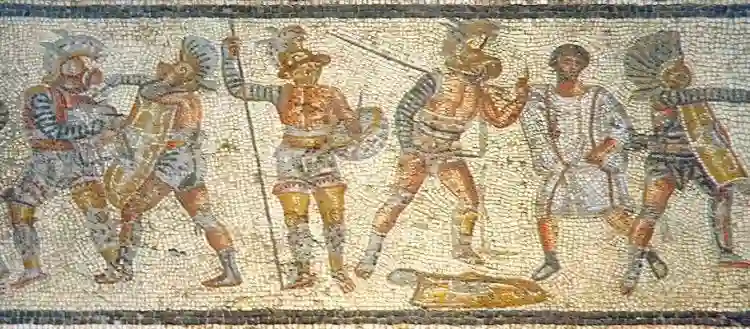
Theories and Speculation: Exploring Possible Explanations
Numerous theories and speculations have emerged regarding the origins, meaning, and identity of the Gypsy Girl mosaic. Some of the most popular theories include:
- A Portrait of a Local Inhabitant or Patron: One theory posits that the mosaic represents a local figure, possibly the wife or daughter of a wealthy patron who commissioned the work. The naturalistic style and personalized features might suggest a portrait rather than a generic representation.
- Depiction of a Mythological or Allegorical Figure: Another theory suggests that the mosaic might depict a mythological character or an allegorical figure, such as a muse or a spirit. Given the era’s fascination with Greek mythology, it is plausible that the figure could represent a character from a lesser-known myth or an allegory for a concept such as wisdom, fortune, or nature.
- Representation of a Deity or Spiritual Entity: Some scholars propose that the Gypsy Girl could be a depiction of a deity or spiritual entity, possibly associated with local cult practices. The penetrating gaze and enigmatic expression might have been intended to invoke a divine or supernatural presence, serving a spiritual or protective function within the villa.
- A Unique Regional Art Style: A different perspective is that the mosaic is an example of a distinctive regional style that developed in Zeugma, influenced by both Greek and Eastern traditions. The technical mastery and emotional intensity of the mosaic suggest that local artists might have developed their own unique style, blending naturalism with expressive, psychological depth.
- A Result of Artistic Experimentation: Another theory is that the Gypsy Girl mosaic represents a form of artistic experimentation. The use of advanced shading techniques, the realistic portrayal of human emotion, and the non-idealized depiction of the figure may indicate an exploration of new artistic trends or a break from traditional conventions.
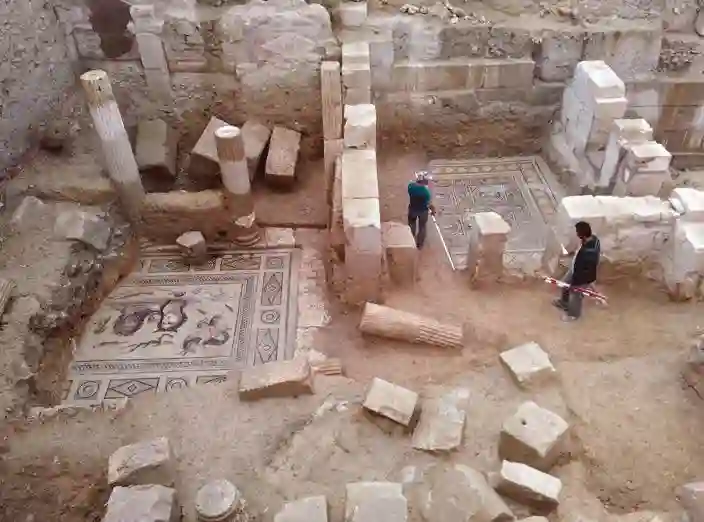
Frequently Asked Questions (FAQs)
1. How old is the Gypsy Girl mosaic?
The Gypsy Girl mosaic is estimated to date back to the 2nd century AD, during the period of Roman influence in ancient Zeugma.
2. What is the Greek mosaic at Zeugma?
The Greek mosaics at Zeugma are intricate artworks that reflect the Hellenistic style, showcasing mythological themes, daily life scenes, and high artistic craftsmanship from the ancient period.
3. What Greek mosaics were found in Turkey?
Several notable Greek mosaics have been found in Turkey, particularly in Zeugma and Antioch, including scenes from mythology, portraits, and depictions of gods and goddesses.
4. When was the Gypsy Girl mosaic made?
The Gypsy Girl mosaic was created in the 2nd century AD.
5. Where can the Gypsy Girl mosaic be seen?
The Gypsy Girl mosaic is on display at the Zeugma Mosaic Museum in Gaziantep, Turkey.
Conclusion: An Enduring Mystery of the Ancient World
The Gypsy Girl mosaic remains one of the most enigmatic and captivating artifacts of ancient Zeugma. While much has been uncovered about its historical and artistic context, many questions continue to perplex scholars and enthusiasts. Who was this mysterious figure with the haunting gaze? What story did the larger mosaic tell? And what can this singular piece reveal about the cultural and social dynamics of the ancient world?
As more archaeological discoveries are made and new technologies are developed to analyze existing finds, we may one day unravel the secrets of the Gypsy Girl mosaic. Until then, it stands as a testament to the artistry, mystery, and complexity of the ancient world, inviting us to look deeper into the past and imagine the untold stories it still holds. If you are intrigued by ancient artifacts and their enigmas, consider exploring the Sabu Disk and the theories surrounding its mysterious purpose
Use of Our Content
⚠️ Content on “Mystery Uncover” is protected under US and International Copyright Laws.
You are free to reuse, republish, and share our content by giving credit to the source as Mystery Uncover with a link to the original material on mysteryuncover.com.


